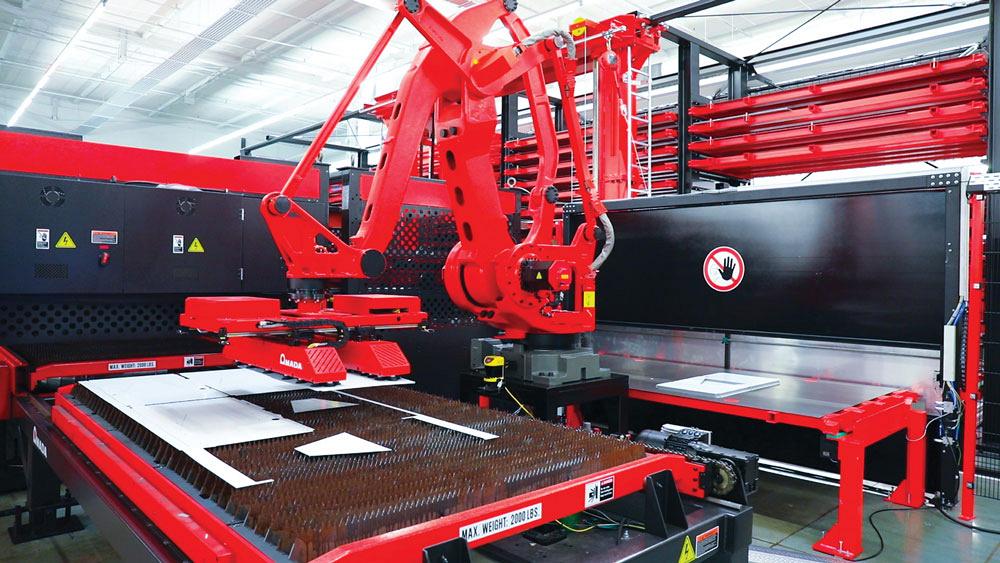Choosing the right workflow automation tool is crucial for optimizing your business processes. This guide provides a comprehensive overview of the various solutions available in the market, helping you make an informed decision based on your specific requirements.
Workflow automation tools have become essential for businesses today. They help streamline processes, reduce costs, increase productivity, and improve overall efficiency. Automation tools can be found in a wide range of industries, from finance to manufacturing, healthcare to education. With so many solutions available in the market, it can be challenging to determine which one is best suited for your business.
This guide aims to provide a comprehensive overview of the various workflow automation tools available in the market and help you make an informed decision based on your specific requirements. Read on to learn more about what these tools can do for your business!

Credit: www.pro-tools-expert.com
Understanding Workflow Automation
Workflow automation is technology that streamlines processes and allows businesses to automate repetitive tasks, saving both time and money. It’s a crucial tool for optimizing operations and increasing overall efficiency. We’ll explore workflow automation in depth, outlining its definition, how it differs from manual processes, and the benefits it offers.
By the end, you’ll have a comprehensive understanding of how workflow automation can help you choose the right solution for your business needs.
Definition Of Workflow Automation
Workflow automation refers to the process of automating manual tasks and processes through technology, such as software or apps. It allows for the easy integration of different systems, applications and people, creating a more efficient way of collaborating and managing tasks.
How It Differs From Manual Processes
When it comes to manual processes, things are done in a very traditional, step-by-step way that can be time-consuming. People must manually complete each task or process, often relying on spreadsheets or other tools that require manual data entry. On the other hand, automated workflows can save time and money by streamlining repetitive tasks such as data entry, document review, and approvals, amongst many others.
Benefits Of Using Workflow Automation
Several benefits come with using workflow automation tools, including:
- Increased efficiency: Automated workflows are quicker and more reliable, resulting in faster task completion.
- Fewer errors: Human error is minimized when tasks are automated, providing more accurate data and fewer missed deadlines.
- Improved collaboration: Automated workflows enable team members to work together more efficiently, with real-time updates and access to all relevant information.
- Greater scalability: As businesses grow, so do their workflows. Automated workflows are easily adjustable to accommodate increased workloads.
Automated workflows are essential to every modern business. Especially, given the many benefits it offers such as increasing efficiency, reducing errors, improving collaboration, and scalability. By implementing workflow automation technologies, businesses can stay ahead of their competition and remain productive in today’s fast-paced world.
Key Considerations In Choosing The Right Workflow Automation Tool
Workflow automation tools: a comprehensive guide to choosing the right solution
Workflow automation tools have revolutionized the way businesses operate today. They help streamline repetitive and time-consuming tasks, driving efficiency, and productivity. Choosing the right workflow automation tool can be an overwhelming task. There are a plethora of options available in the market, and one must consider several different factors before making a decision.
In this section, we will discuss the key considerations that organizations should take into account while selecting a workflow automation tool.
Identifying The Workflow Needs Of Your Organization
Before choosing a workflow automation tool, it’s crucial to identify the specific workflow needs of your organization. Here are some critical elements to consider:
- What are the processes that your business must automate?
- What are the pain points that you want to address?
- What are the requirements of your employees?
- What are your business goals, and how can a workflow automation tool help achieve them?
Answering these questions will help you understand your workflow requirements and ensure that you choose a tool that meets your needs.
Scalability And Flexibility Of The Tool
As your business grows, your workflow requirements may evolve. Having a workflow automation tool that can scale and grow with you is crucial. Here are some factors to consider:
- Will the tool be able to handle an increase in workload?
- Is the tool flexible enough to adapt to changes in the workflow processes?
- Does the tool accommodate different types of workflows, processes, and integrations?
- Will the tool’s pricing structure be flexible enough to support future growth?
By considering these factors, you can choose a workflow automation tool that can grow with your business and adapt to its changing needs.
Integration With Existing Systems
Most businesses already have existing systems in place, such as crm, erp, or project management systems. It’s essential to select a workflow automation tool that can integrate seamlessly with these existing systems. Here are some factors to consider:
- Can the tool integrate with your existing systems?
- Will the integration be easy to set up and manage?
- How much time and effort will it take to set up integrations?
- Can the tool accommodate multiple integrations?
By ensuring that your workflow automation tool can seamlessly integrate with your existing systems, you can avoid disruption to your existing processes and workflows.
User-Friendly Interface And Ease Of Use
One of the most crucial factors in choosing a workflow automation tool is its ease of use. Employees must be able to use the tool with minimal training, and the tool’s interface must be easy to navigate. Here are some factors to consider:
- Is the tool’s interface intuitive and easy to use?
- Will employees need extensive training to use the tool?
- Are there tutorials or resources available to help employees get started?
- Can processes be created and modified with ease?
By selecting a user-friendly workflow automation tool, you can increase employee adoption and drive productivity.
Security And Data Privacy Features
Finally, it’s crucial to consider the security and data privacy features of a workflow automation tool. Here are some factors to consider:
- What security measures are in place to protect data?
- Is the tool soc 2 compliant, and does it adhere to other relevant data privacy regulations?
- Is data encrypted both in transit and at rest?
- Is there a disaster recovery plan in place?
By selecting a workflow automation tool with robust security and data privacy features, you can ensure that your business-critical data remains safe and secure.
Selecting the right workflow automation tool requires careful consideration of several factors, including the workflow requirements of your organization, the scalability and flexibility of the tool, its integration capabilities, its ease of use, and its security and data privacy features.
By taking these factors into account, you can choose a workflow automation tool that drives efficiency, productivity, and business success.
Top Workflow Automation Tools To Consider
Description Of The Top Tools In The Market
Workflow automation can save organizations time and money while improving efficiency. The demand for such tools has resulted in a saturated market, with numerous workflow automation tools available. Here are a few top workflow automation tools:
- Zapier: A popular cloud-based workflow automation tool that integrates with over 2,000 apps to automate tasks.
- Integromat: A more robust cloud-based automation tool that also integrates with numerous apps and services, but with more advanced automation capabilities.
- Microsoft power automate: Formerly known as microsoft flow, this tool integrates well with microsoft applications and services such as excel and dynamics 365.
- Airtable: A cloud-based collaboration and workflow management tool that enables users to create custom workflows and automate routine processes.
- Trello: A popular project management tool with built-in automation capabilities for tasks such as moving cards between lists and assigning due dates.
Comparison Of Their Features And Capabilities
To make an informed decision about which tool is right for your business, it is important to understand their features and capabilities. Here is a comparison of the key features of each tool:
- Zapier: Easy-to-use, with a simple drag-and-drop interface. It is best suited for small to medium-sized businesses with basic automation needs.
- Integromat: More advanced automation capabilities than zapier, such as setting up complex workflows and integrations. It is recommended for larger businesses with complex automation needs.
- Microsoft power automate: Seamlessly integrates with microsoft applications and services, making it the best choice for businesses that frequently use microsoft tools.
- Airtable: Allows users to create custom workflows with relational tables and form views, making it suitable for any business that requires a customizable solution.
- Trello: A project management tool with built-in automation capabilities for task management and collaboration, making it great for businesses that operate project-based workflows.
Pros And Cons Of Each Tool
Here are the pros and cons of each tool:
- Zapier:
- Pros: Easy to use, cost-effective, integrates with numerous apps and services.
- Cons: Limited automation capabilities, requires a stable internet connection
- Integromat:
- Pros: Advanced automation capabilities, can handle complex workflows, more integrations, free and paid plans available.
- Cons: Steeper learning curve, may be too complex for small businesses.
- Microsoft power automate:
- Pros: Seamless integration with microsoft tools, free and paid plans available, easy to use.
- Cons: Limited integrations, does not work well with non-microsoft applications, limited capabilities of the free plan.
- Airtable:
- Pros: Highly customizable, good for project management, versatile and flexible.
- Cons: Relatively expensive compared to other options, less straightforward for beginners.
- Trello:
- Pros: Easy to use, free and paid plans available, great for task management and collaboration.
- Cons: Limited workflow automation capabilities, may feel too simplistic for more advanced users.
Recommended Tool Based On Specific Business Needs
Based on the pros and cons outlined above, the recommended tool will vary depending on the specific business needs. For small businesses with basic automation needs, zapier or trello may be the best option. For larger enterprises or those with more complex workflows, integromat or airtable may be a better fit.
If the business frequently uses microsoft applications and services, microsoft power automate would be the best choice. Ultimately, the choice of tool will depend on the business’s unique needs and preferences.
Frequently Asked Questions Of Workflow Automation Tools: A Comprehensive Guide To Choosing The Right Solution
What Are Workflow Automation Tools?
Workflow automation tools allow businesses to automate their processes, reducing manual intervention, and maximizing efficiency.
How Do Workflow Automation Tools Work?
Workflow automation tools use pre-defined rules to automate repetitive tasks, reducing human error, and saving time.
What Are The Benefits Of Workflow Automation Tools?
Workflow automation tools improve efficiency, reduce human error, increase productivity, and save costs for businesses.
Conclusion
After going through this comprehensive guide on workflow automation tools, you should be equipped to make an informed decision on which solution suits your business needs. Remember to consider factors such as the size of your organization, your budget, and your current workflows before making a choice.
By choosing the right workflow automation tool, you can streamline your processes, reduce human errors, and ultimately improve productivity and profitability. Make sure to do your due diligence when researching different options and take advantage of free trials and demos before making any commitments.
Overall, incorporating workflow automation tools into your business operations is a smart investment that can have a positive impact on your bottom line. So, take action now and reap the benefits of automation!

